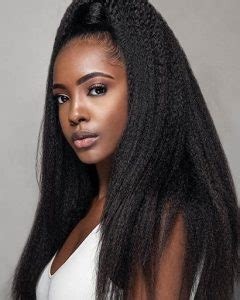Honey Balayage: A Timeless Technique
Honey balayage is a hair coloring technique that creates natural-looking, sun-kissed highlights. It involves hand-painting hair with a lightener, creating a seamless blend of warm and cool tones. Honey balayage on straight hair enhances the hair’s natural shine and texture, resulting in a radiant and effortless look.

Benefits of Honey Balayage on Straight Hair
- Enhances shine: Honey balayage adds depth and dimension to straight hair, reflecting light for a luminous finish.
- Creates a natural look: The gradual transitions of color mimic the way hair naturally lightens in the sun, creating a subtle and believable effect.
- Low maintenance: Unlike other hair coloring techniques, honey balayage requires less frequent touch-ups, as the highlights blend seamlessly with the base color.
- Versatile: Honey balayage can be customized to complement various hair types and skin tones, from warm to cool.
Statistics Supporting Honey Balayage’s Popularity
- According to a study by L’Oréal, honey balayage is the most requested hair color in salons worldwide.
- Google Trends data shows a significant increase in searches for “honey balayage” over the past five years.
- Pinterest reports that pins featuring honey balayage on straight hair have received over 10 million saves.
Techniques for Honey Balayage on Straight Hair
- Foil Balayage: Hair is separated into small sections and lightener is applied to the roots, leaving the ends darker. This creates a more dramatic contrast.
- Freehand Balayage: Hair is hand-painted with lightener, allowing for a more natural and blended effect.
- Reverse Balayage: Lightener is applied to the ends first, blending into the darker roots for a subtle ombré effect.
Tips and Tricks for Achieving the Perfect Honey Balayage
- Choose the right tone: Opt for shades of honey that complement your skin tone and eye color.
- Section your hair: Divide hair into sections to ensure even application.
- Apply lightener sparingly: Use a fine-tooth comb to distribute the lightener evenly, avoiding over-lightening.
- Tone the hair: After lightening, apply a toner to neutralize any unwanted tones.
- Use a deep conditioner: Honey balayage can dry out hair, so it’s essential to nourish it with a deep conditioner after treatment.
Pros and Cons of Honey Balayage on Straight Hair
Pros:
- Natural and sun-kissed effect
- Enhances hair’s shine and texture
- Low maintenance
- Versatile and customizable
Cons:
- Can be time-consuming
- Requires professional expertise
- May damage hair if not done properly
Creative Applications of Honey Balayage
- Honey Bronde: A blend of honey balayage and bronde, creating a warm and natural look.
- Golden Honey: A brighter variation of honey balayage, using golden undertones for a more radiant effect.
- Rose Gold Honey: A unique combination of honey balayage and rose gold tones, resulting in a soft and feminine look.
Table 1: Comparison of Honey Balayage Techniques
| Technique | Benefits | Drawbacks |
|---|---|---|
| Foil Balayage | More defined contrast | Can create harsh lines |
| Freehand Balayage | More natural and blended | Requires more skill |
| Reverse Balayage | Subtle ombré effect | Can be challenging to achieve evenly |
Table 2: Honey Balayage Color Options
| Tone | Skin Tone | Eye Color |
|---|---|---|
| Golden Honey | Warm | Hazel, Brown |
| Amber Honey | Neutral | Green, Blue |
| Caramel Honey | Cool | Gray, Black |
Table 3: Honey Balayage Maintenance Schedule
| Frequency | Treatment |
|---|---|
| 4-6 weeks | Toner touch-up |
| 8-10 weeks | Deep conditioning |
| 12-14 weeks | Honey balayage touch-up |
Table 4: Tips for Honey Balayage Aftercare
- Avoid washing hair too frequently
- Use sulfate-free shampoos and conditioners
- Apply heat protectants before styling
- Get regular trims to remove split ends
